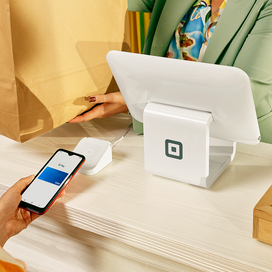With consumers facing rising prices and becoming more cautious about their spending, now may be a good time to rethink your strategies for driving sales.
In this regard, big retailers can take some cues from smaller, more nimble companies that have thrived during the pandemic.
Some ideas include reconsidering product assortment to focus on bundling items that fill a niche or meet consumer demand, revisiting who your core customers are, or rethinking operational processes to reflect changes in the way consumers are shopping in the current environment.
Bundle your products
The products that your company has been successfully selling for years might not be the same products that will drive the most sales and profits going forward. Retailers might need to change up their assortments to meet evolving consumer demands.
Look carefully at the products you currently offer. Which ones are still driving strong sales and margins, and which products are not? Consider ways to drive more sales of some products by packaging them in new ways. Are there opportunities to bundle products together to create new SKUs that contain multiple individual items? Can some products be offered together as kits that make it easy for consumers to assemble them at home?
Consider the possibilities of customization when you bundle products together. Allow customers to mix-and-match different product combinations. This creates opportunities for you to personalize product bundles by analyzing customers’ past shopping behavior and suggesting specific product bundles or add-ons for each individual.
For example, The Spice Suite, a retail store in Washington, D.C., offered a mix of different spices in a Spice Box to drive online sales during the pandemic.
A recent survey from McKinsey found that 71% of consumers expect companies to deliver personalized interactions and 76% get frustrated when this doesn’t happen.
Retailers can take this even further by bundling products in ways that seek to surprise their customers with curated selections made by your experts. This type of bundling is reflected in the success of subscription snack boxes, for example.
Follow your customers
Have the events of the past two years caused changes in where and how your customers shop? Have your pre-pandemic customers relocated to other areas? Have local residents switched to a work-from-home routine that has changed their shopping patterns? How much of your business was dependent upon commuters from other areas coming to work in your area, and how much of that business has been retained?
Retailers should take a closer look at the evolving demographics and behaviors in the areas where they do business to determine if their current customer base matches the perceptions that they previously had.
Senor Sisig in San Francisco is one small business that was able to make such a geographic pivot. Sales at its six food trucks plummeted when offices closed down in the city at the start of the pandemic, so the company leveraged its inherent flexibility to relocate out of the office-dense downtown areas of the city and into the areas where people were working from home.
More than half of workers — 58% — said they have the opportunity to work from home at least one day a week, according to McKinsey. In addition, more than a third — 35% — said they have the opportunity to work from home five days a week.
If customers are no longer patronizing your business because they are coming to your area less frequently, perhaps you should consider targeting these shoppers with an eCommerce offer that includes delivery to their homes. Or perhaps you can open pop-up stores in new areas where their core customers are shopping, using mobile POS tools.
Take your brand online
ECommerce offers retailers opportunities to reach consumers all over the world, but you should take steps to ensure that you are not just offering products online, but also sharing your brand.
When Detroit’s 99-year-old men’s clothing store Hot Sam’s had to temporarily shut down in the first year of the pandemic, they decided to launch an ecommerce store to provide a way for their customers to continue shopping with them.
“Just because we are the oldest men’s clothing store in downtown Detroit, we didn’t want to look like or act like the oldest men’s clothing store,” said Lauren Stovall, marketing director at Hot Sam’s.
Shopping on your eCommerce site should be a reflection of the in-store experience you provide. Look for ways to ensure that the elements that are a core part of your brand’s personality carry through to your website. That could include design elements such as the color scheme and font selection, as well as the way products are organized, the level of customer service you offer, your price messaging, and other key attributes that differentiate you from your competitors.
Tools such as those offered by Square allow you to translate your in-store experience online while providing the tools you need to fulfill customers’ orders, whether it’s though delivery or onsite pickup.
Meet the challenge
Changes in how consumers are shopping in the current environment may present an opportunity for you to rethink your strategies.
Think about how you offer your products — are there opportunities to bundle certain products or create personalized packages of products that make your customers’ lives easier or that surprise and delight? Look to see where your customers are shopping now that the pandemic has realigned the work-home balance, and devise strategies to meet them where they are.
However you may need to pivot to meet the challenges of the evolving operating environment, Square has the tools to help you execute your business strategies and drive sales growth and profitability.
![]()












